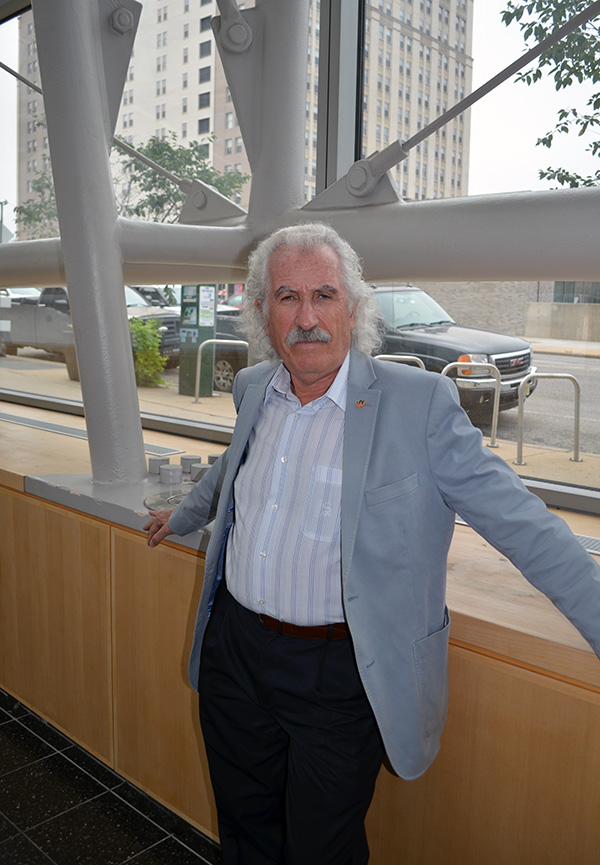Alexander Fridman, PhD, is comfortable outside the box.

Dr. Alexander Fridman
Fridman, the Nyheim Chair Professor and Director of the C. & J. Nyheim Plasma Institute of Drexel University, has built a legacy on innovation in the application of plasma across many fields of science. For his considerable contributions, Fridman was announced a Fellow of the National Academy of Inventors in December.
“What’s interesting about plasma is that, in general, it’s a very non-equilibrium system,” Fridman explains. “You create cold plasma by sending fast-moving electrons, which give off a lot of heat, through relatively cold gasses. Because of how energetic and at the same time cold it is, it allows you to do many things that are otherwise impossible.”
If the description sounds nebulous, that’s because it is. Fridman says that, while most scientists, even the most creative thinkers, work to stretch existing boundaries, plasma science is far afield of anything considered before. This is especially relevant when considering the formation of the plasma medicine, a discipline that was developed at the Nyheim Institute.
Fridman explains that the best way to understand plasma medicine is to think of lightning. When a tremendous difference between positive and negative charges exists, it needs to become balanced, and so the buildup of electrons very quickly moves to the positively-charged surface. The speed of the transfer causes heat and light, which we see as lightning.
“Can we apply lightning to the human body,” Fridman asks? “No, it would kill everything. But what if you could diffuse the energy to a gentle glow, and apply it in very quick pulses? That’s what plasma medicine is. With that intense but directed energy, we can sterilize wounds, heal cuts, even perhaps target and kill cancerous cells. The possibilities are endless.”
But Fridman is quick to insist that, while he and his team developed the methodology and first devices to use plasma in the body, the future of plasma medicine and its applications are in the hands of medical professionals. There are other areas of science and industry that need plasma’s help.
One such area is plasma energy and the production of power without CO2 emissions. Fridman says that, mimicking nature, plasma can combust carbon and exhaust a polymerized suboxide, C3O2, instead of gaseous carbon dioxide.
“Think of how the body processes food,” Fridman explains. “We use what we need to create energy, and then what’s left over becomes solid waste. Because plasma is quick and cold, we can mimic the process of what happens in the human body to combust fuel without creating gas and instead creating natural fertilizer.”
The process has been patented by the Nyheim Institute and has already been given a proof of concept. Thanks to an investment from Albert II, Prince of Monaco, researchers at Drexel developed a miniature car that produces pellets of fertilizer as its exhaust. The idea that full-scale production of vehicles will use the technology is unlikely, Fridman says, but the successful development of the model leaves open other possibilities.
“In three or four years, perhaps, we may see a power plant creating power with these fertilizer pellets as their exhaust instead of CO2,” he says. “That way, we’re not changing just the auto industry — we’re reimagining the entire energy industry.”

Dr. Fridman speaking at the 1st International Meeting on Plasma Cosmetic Science.
Fridman explains that many enthusiasts today, including SpaceX CEO Elon Musk, are thinking about building a settlement on Mars by the 2050s. The technology could be used in such a settlement, converting the CO2-rich Martian atmosphere to an oxygen-based atmosphere like our own, with fertile soil as a by-product.
“Anaerobic microorganisms did it naturally in our planet over about a billion years,” Fridman explains. “Plasma can mimic it in minutes!”
Plasma has endless applications, and Fridman and the Nyheim Institute will continue to explore them. Fridman points to the successful contribution of his colleagues Alexander Rabinovich, Danil Dobrynin, Dmitry Vainchtein, as well as Professor Yong Cho and other plasma-focused faculty of the Department of Mechanical Engineering. Last year, they started a project on using plasma to safely sterilize grocery store produce without chemicals and quickly pivoted to developing a machine that can sterilize and regenerate facemasks to help fight the COVID-19 pandemic.
Ultimately, it will be up to others to use the technology that is invented at the Nyheim Institute in new and exciting ways. But Fridman is humble about his place at the forefront of discovery.
“We’re engineers, so we’re just making devices,” he says. “At some point it’s taken by other people in the industry, and they say thank you very much and then it’s in their hands. That’s good. That’s the way it should be.”